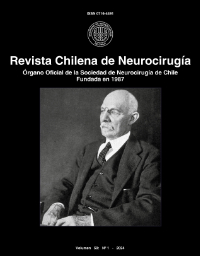Embryonal tumor with multilayered rosettes in the sellar and suprasellar region in a pediatric patient. Case report at UMAE 25 and literature review
##plugins.themes.bootstrap3.article.main##
Abstract
ETMRs of CNS are reported as grade IV by the WHO. They are associated with a 95% mutation at the chromosomal level of 19q13.42 locally. Generally, they present in childhood, located supratentorially in the frontal lobe, manifesting various clinical symptoms depending on the location; however, up to 85% present with intracranial hypertension. Due to their malignant nature, despite total macroscopic resection and adjuvant treatment, they exhibit a overall survival prognosis of 30% at 5 years. In the presented case, a supratentorial tumor lesion is evident at the sellar and suprasellar levels, with clinical presentation showing hormonal alterations of hypothyroidism and hypocortisolism, as well as bitemporal hemianopsia; it was observed
in the second decade of life in a male patient, presenting a recurrence after total resection, even with adjuvant treatment. The literature identifies pathology in childhood with a range of 0.5 to 6 years of age, with a mean age of 3 years, presenting supratentorially, with more than 50% located in the frontal lobe and subsequently in the frontoparietal region; 30% present infratentorially at the cerebellar level. A case of a 14-year-old male patient is reported, obtained from the UMAE 25 database by the neurosurgery service, wherein suprasellar tumor pathology with recurrence is evident."
##plugins.themes.bootstrap3.article.details##
SNC ETMRs, grade IV, WHO, 19q13.42 mutation, childhood, intracranial hypertension, adjuvant treatment, overall survival prognosis, supratentorial tumor, sellar region, hypotyroidism, hypocortisolism, bitemporal hemianopsia, recurrence

This work is licensed under a Creative Commons Attribution-NonCommercial 4.0 International License.








